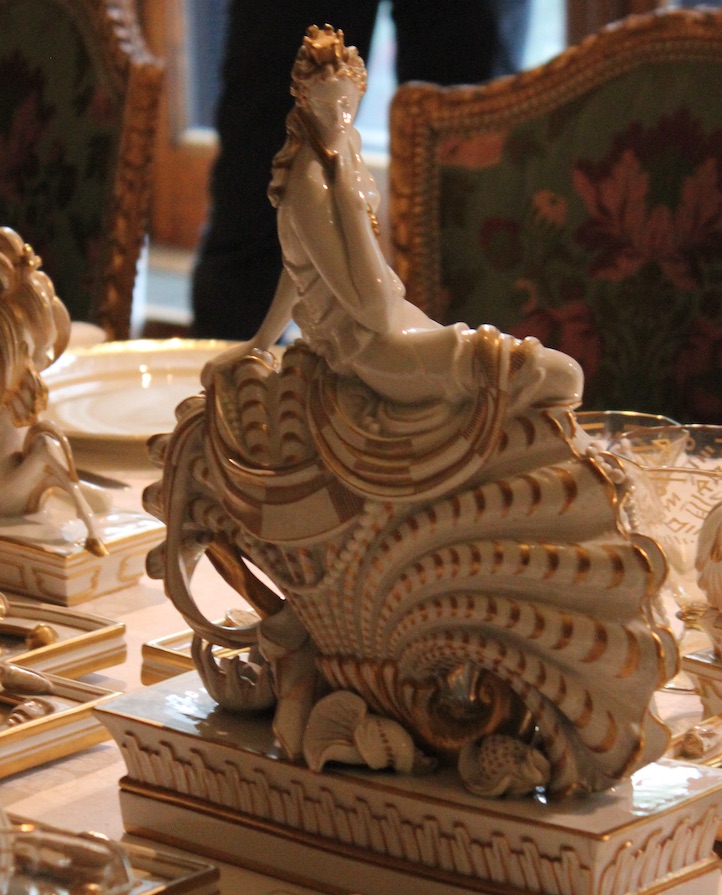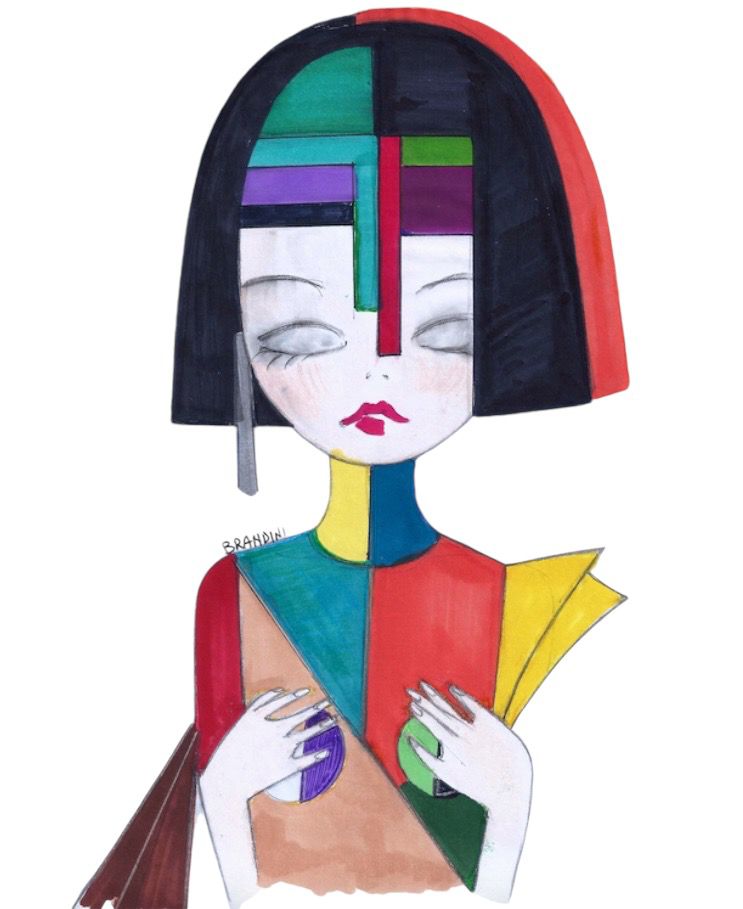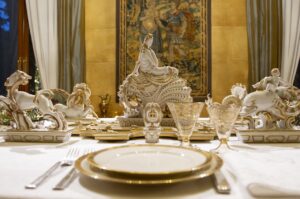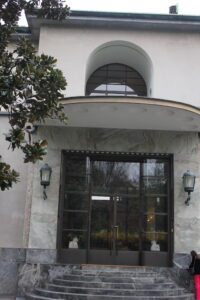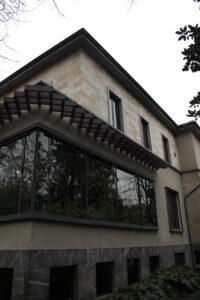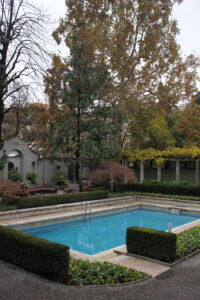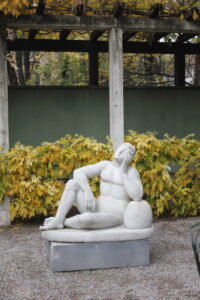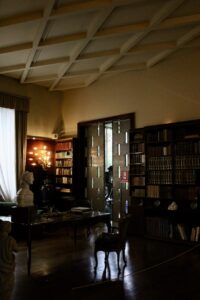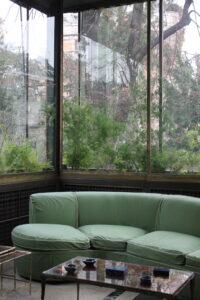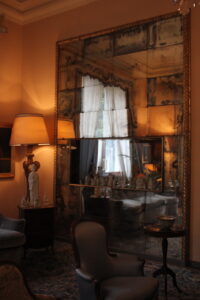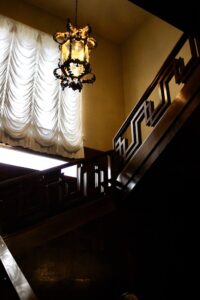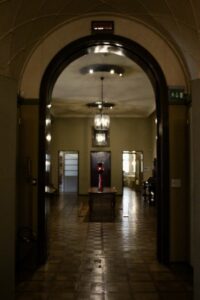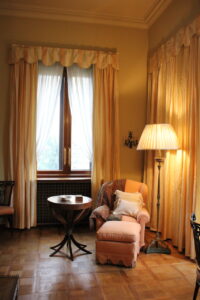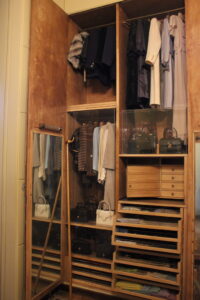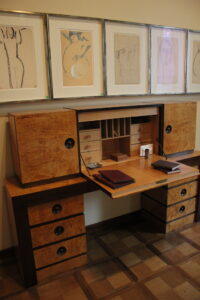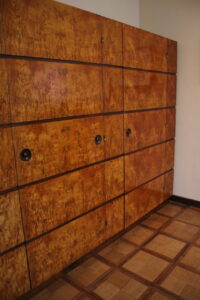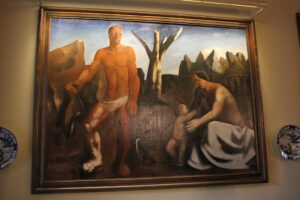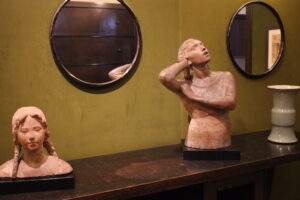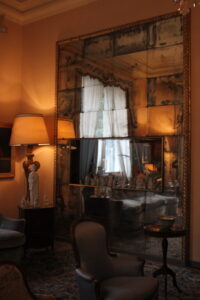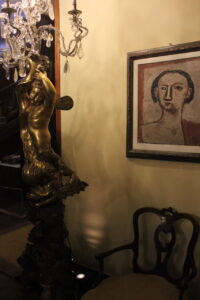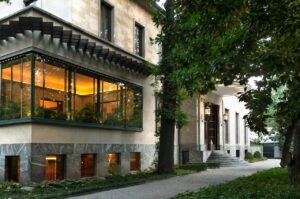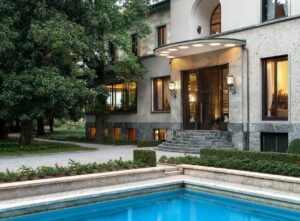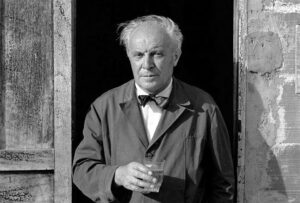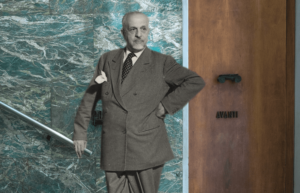Table centerpiece by Giò Ponti at Villa Necchi (detail)
Enigma by Beatrice Brandini
The FAI – Fondo for italian Environment Fund ETS and the Richard-Ginori Archive Museum Foundation of the Doccia Manifattura present the Centerpiece for the Ministry of Foreign Affairs by Gio Ponti, modeled by Italo Griselli and created by Richard Ginori between 1927 and 1929 in the historic Doccia factory.
Two details from the great table Trionfo by Gio Ponti
From 6 December 2023 to 28 January 2024 at Villa Necchi Campiglio, for the first time in a House Museum, the porcelain table centerpiece designed by the great Milanese architect for the well-known ceramic company from Sesto Fiorentino will be exhibited.
External views of Villa Necchi Campiglio
External views of Villa Necchi Campiglio
Wonderful and rare testimony to the collaboration between Gio Ponti and Tomaso Buzzi, the table centerpiece is a true sculptural creation consisting of the allegorical figure of Italy lying on a shell to which are added heraldic animals and small porcelain elements, all translated through a reinterpretation of the Antique in Art Deco taste.
Internal views of Villa Necchi Campiglio
The large table Triumph, commissioned to the Tuscan company by the Ministry of Foreign Affairs in 1926, designed to decorate the tables of diplomatic offices on highly representative occasions, is set up for the first time in a space that recalls its original function of scenographic decoration like the table in the dining room of Villa Necchi Campiglio.
Staircase from the ground floor leads to the sleeping area
Glimpses of the first floor of Villa Necchi Campiglio
The event is also worth celebrating the hundred years since the first International Biennial of Decorative Arts held in Monza, where the Ginori factory exhibited the signature ceramics designed by Gio Ponti, precisely in 1923, the year in which the master took over its artistic direction.
Milan celebrates the Ginori Manufacture with another beautiful initiative, the White Gold exhibition. Three centuries of Ginori Porcelain, underway at the Poldi Pezzoli Museum.
Bedroom and wardrobe with original clothes and accessories of the time
Admiring Gio Ponti’s table centerpiece will be an extra incentive to see one of the most beautiful Italian homes of the 1930s in the heart of Milan. Villa that houses masterpieces of art, but above all preserves an intact and cultured atmosphere.
Details of some furniture in the rooms of Villa Necchi Campiglio
The Villa, donated to the FAI by Gigina Necchi Campiglio and Nedda Necchi in 2001, is enriched by three important donations: the collection of 17th century paintings and decorative arts by Alighiero and Emilietta de’ Micheli donated to the FAI in 1995; of the collection of early twentieth century works of art by Claudia Gian Ferrari, donated to the FAI in 2009 and of the collection composed of 21 drawings on paper by twentieth century artists such as Picasso or Modigliani, by Guido Sforni, donated to the FAI in 2017.
The FAI which protects the Artistic and Naturalistic Heritage of our artistic and landscape heritage, restoring them to their real beauty, instructing us to preserve it, appreciate it, respect it and love it, a gift, therefore, for all of us.
The wonderful painting by Sironi in the entrance of Villa Necchi Campiglio and some sculptural works
Other views of Villa Necchi Campiglio on the ground floor
The Villa, surrounded by a wonderful garden, was designed in the early 1930s by the architect Piero Portaluppi, perhaps the most avant-garde architect of the time, who created architectural and functional solutions within it that were absolutely ahead of their time. No villa in the center of Milan had a garden, a swimming pool and a tennis court inside. Inside there was an elevator that connected the four levels of the house, a dumbwaiter, internal intercoms and bells to call the staff, the automatic grate at the entrance, the safes and the sliding armored doors, just to name a few of the extraordinary and modern ideas adopted by Portaluppi.
Two external views of Villa Necchi Campiglio
I, who love those years, was really moved by the beauty, refinement and conservation of the extraordinary works, but also of the small artefacts, such as the toilet accessories, which, when you close your eyes, take you back to those years, immersing you in a rarefied atmosphere where time has stopped.
The great masters Gio Ponti and Piero Portaluppi
Finally I want to say a word for Milan, a city that has generously welcomed me for many years, and for the Milanese. Some families of cultured and modern industrialists have often “returned” their fortune. Many of Milan’s hospitals, but also nursery schools, are the result of donations. Villa Necchi is an extraordinary testimony to this. Life has given them so much and they have given back with great altruism. We carry nothing with us and sharing culture, art, beauty in general, with others, I believe is the greatest gift we can give to future generations.
Good life to everyone!
Beatrice


